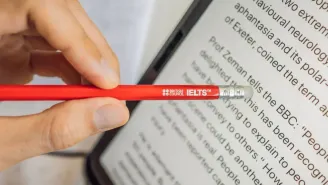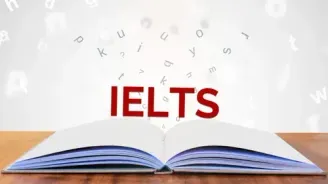Corporate Social Responsibility Reading Answers Passage
Corporate Social Responsibility Reading Answers Passage
In general, proponents of CSR have supported their position with four arguments: moral obligation, sustainability, license to operate, and reputation. Business for Social Responsibility, the biggest non-profit CSR business organisation in the United States, has as a primary objective the moral argument that corporations must be decent citizens and do the right thing. It requests that its members “achieve business success in methods that respect people, communities, and the natural environment.” Sustainability promotes environmental stewardship and community responsibility.
Paragraph A. In the 1980s, Norwegian Prime Minister Gro Harlem Brundtland and the World Business Council for Sustainable Development created an outstanding description. “Meeting existing demands without sacrificing future generations’ ability to satisfy their own needs.” Every enterprise needs the tacit or explicit approval of governments, communities, and numerous other stakeholders to operate. Lastly, many organisations utilise reputation to justify CSR activities since they will enhance a company’s image, build its brand, boost morale, and even increase its stock value.
Paragraph B. To advance CSR, it must be rooted in a broad knowledge of the interaction between business and society while also being anchored in the plans and actions of individual organisations. Interdependence between companies and society may appear to be a cliche, but it is a basic truth that may help firms escape the quicksand created by their current corporate responsibility mindset. A prosperous economy requires a healthy society. Education, health care, and fair opportunity are crucial components of a thriving workforce. In addition to attracting customers, safe goods and working environments reduce the internal costs of accidents. Effective utilisation of land, water, energy, and other natural resources promotes business productivity. Efficiency and creativity require effective governance, the rule of law, and secure property rights. Strong regulatory requirements safeguard against the exploitation of both consumers and competing businesses. As more human needs are addressed and aspirations increase, a healthy society inevitably generates rising commercial demand. Any organisation that pursues its objectives at the expense of the society in which it operates will enjoy a false and ultimately ephemeral success. Likewise, a healthy society requires prosperous businesses. No social program can compete with the private sector when it comes to generating employment, income, and innovation that sustainably enhances living standards and social circumstances.
Paragraph C. A company’s influence on society also evolves through time as social norms and science advance. Given the known scientific knowledge in the early 1900s, it was believed that asbestos did not pose a significant health concern. For over fifty years, evidence of its hazards steadily accumulated for any firm to be held accountable for the injuries it could create. Numerous companies that failed to predict the repercussions of this increasing corpus of knowledge have collapsed as a result. Companies can no longer be happy with monitoring merely the most obvious social implications of the present. Without a methodical procedure for recognising the growing societal implications of the future, businesses may endanger their very survival.
Paragraph D. No firm can address all of society’s issues or absorb the expenses associated with doing so. Instead, each corporation must choose topics that overlap with its industry. Other social goals should be left to corporations in other industries, non-governmental organisations (NGOs), or government entities that are better equipped to address them. The primary criteria that should lead to corporate social responsibility are not whether a cause is deserving but whether it gives a chance to produce shared value—that is, a substantial benefit for society that is also useful for the firm. However, corporations are neither accountable for nor equipped to tackle all of the world’s issues. Each organisation may identify the specific set of societal issues it is best qualified to assist in resolving and from which it can get the greatest competitive advantage. Creating shared value to address social concerns will result in self-sustaining solutions independent of commercial or government subsidies. A corporation may have a bigger influence on social good than any other institution or philanthropic organisation when it uses its massive resources, experience, and managerial ability to challenge its understanding in which it has a stake.
Paragraph E. The most effective corporate citizenship programs require far more than making a check: They outline specific, quantifiable objectives and monitor performance throughout time. GE’s effort to adopt low-performing public high schools around its main U.S. operations is a prime example. The corporation provides between $250,000 and $1,000,000 in cash and in-kind grants to each institution over five years. GE Managers and staff play an active role by collaborating with school authorities to identify student needs and provide mentoring or tutoring. In an independent examination of 10 schools participating in the program between 1989 and 1999, virtually all showed considerable improvement, while the graduation percentage in four of the five lowest-performing schools rose from an average of 30% to 60%. Effective corporate citizenship projects, such as this one, generate goodwill and enhance relationships with local governments and other significant stakeholders. In addition, GE personnel are extremely proud of their engagement. However, their influence is fundamentally restricted. Regardless of how advantageous the program is, it remains incidental to the company’s operation, and its direct impact on GE’s recruitment and retention is small.
Paragraph F. The Working Connections relationship between Microsoft and the American Association of Community Colleges (AACC) is an excellent illustration of a shared-value potential resulting from investments in context. There are currently more than 450,000 empty IT roles in the United States alone, which poses a substantial growth barrier for Microsoft. Community colleges, which enrol 11,6 million students, or 45 per cent of all undergraduates in the United States, might be a key answer. Microsoft acknowledges, however, that community colleges confront unique challenges: IT courses are not standardised, classroom technology is frequently obsolete, and there are no regular faculty professional development programs. Microsoft’s $50 million five-year program targeted all three issues. In addition to monetary and product donations, Microsoft dispatched staff volunteers to universities to analyse requirements, contribute to curriculum creation, and establish institutes for faculty development. In this instance, volunteers and allocated staff were allowed to apply their primary professional abilities to meet a social need, which is a significant departure from the norm for volunteer programs. Microsoft has accomplished accomplishments that have helped several communities while having a direct and possibly major effect on the firm.
Paragraph G. At the core of each strategy is a unique value proposition: a set of demands that a firm can fulfil for its selected clients that no other company can. CSR is at its most strategic when a firm adds a social dimension to its value offer and integrates social effect into its entire strategy. Consider Whole Foods Market, whose value proposition is to provide organic, natural, and nutritious food goods to food and environment-conscious customers. Each store’s buying procedure prioritises purchases from local farmers as part of the company’s sourcing strategy. Buyers exclude meals containing any of the almost 100 common additives that the corporation deems unhealthy or harmful to the environment. The same criteria apply to domestically produced goods. The dedication of Whole Foods to natural and ecologically sustainable business practices extends far beyond sourcing. The construction of stores uses a minimum of virgin resources. Recent purchases of renewable wind energy credits offset the firm’s complete power use across all of its shops and facilities, making it the first Fortune 500 company to do so. Produce spoilage and biodegradable garbage are transported to regional composting plants via truck. The cars of Whole Foods are being modified to operate on biofuels. Even the store’s cleaning supplies are ecologically friendly. And via its philanthropic efforts, the corporation has established the Animal Compassion Foundation to pursue more natural and ethical methods of animal husbandry. In conclusion, almost every part of the company’s value chain strengthens the social dimensions of its value proposition, thereby separating Whole Foods from its competitors.
From the 2007 Harvard Business Review
Optimise your IELTS Reading test preparation with the Corporate Social Responsibility Reading answers below!
Also Read: IELTS Reading Tips & Tricks 2024: Techniques for Band 9
Corporate Social Responsibility Reading Answers with Sample Questions
Have you read the passage? Now, take the test and find the Corporate Social Responsibility Reading answers! Try to answer these questions by yourself before you sneak a peek at the answers given below.
Check Out Top 15+ IELTS Reading Practice Test Questions with Answers
Below are some top free IELTS Reading Practice test online questions with detailed answers to enhance your IELTS preparation online. We have provided sample passages for each test type for your reference.
- What Is Exploration Reading Answers
- Effects Of Noise Reading Answers
- The Discovery Of Baby Mammoth Reading Answers
- The Dead Sea Scrolls Reading Answers
- The Ring-Tailed Lemur Reading Answers
- Why We Need To Protect Polar Bears Reading Answers
- Nutmeg A Valuable Spice Reading Answers
- What Is Meaning Reading Answers
- Cutty Sark Reading Answers
- The Step Pyramid Of Djoser Reading Answers
- South Pole Adventurer Reading Answers
- The Future Of Work Reading Answers
- Ambergris Reading Answers
- Trees In Trouble Reading Answers
- Could Urban Engineers Learn From Dance Reading Answers
- The Flavour Of Pleasure Reading Answers
- The Value Of A College Degree Reading Answers
- Why You Should Delegate Tasks To Team Members Reading Answers







